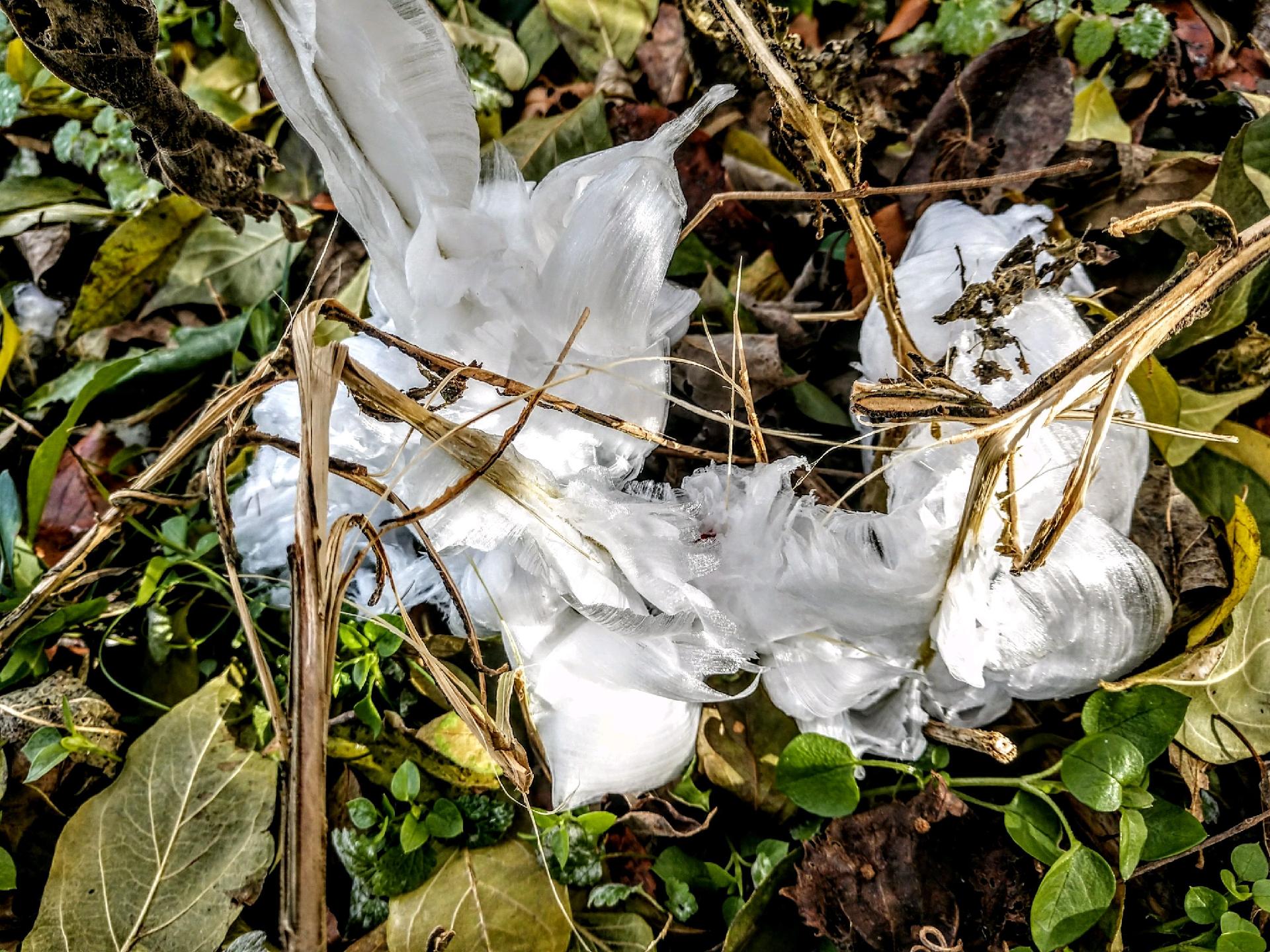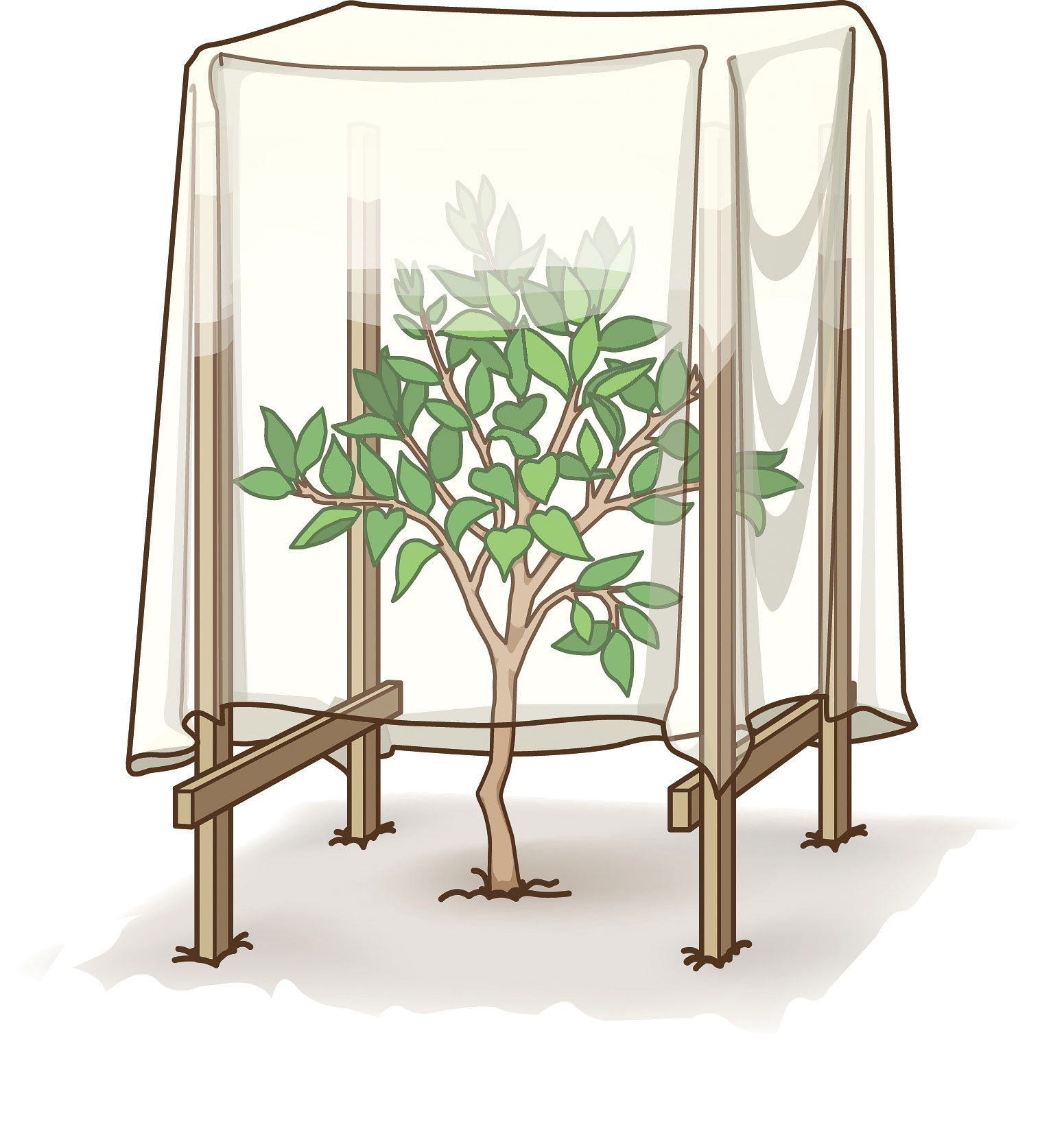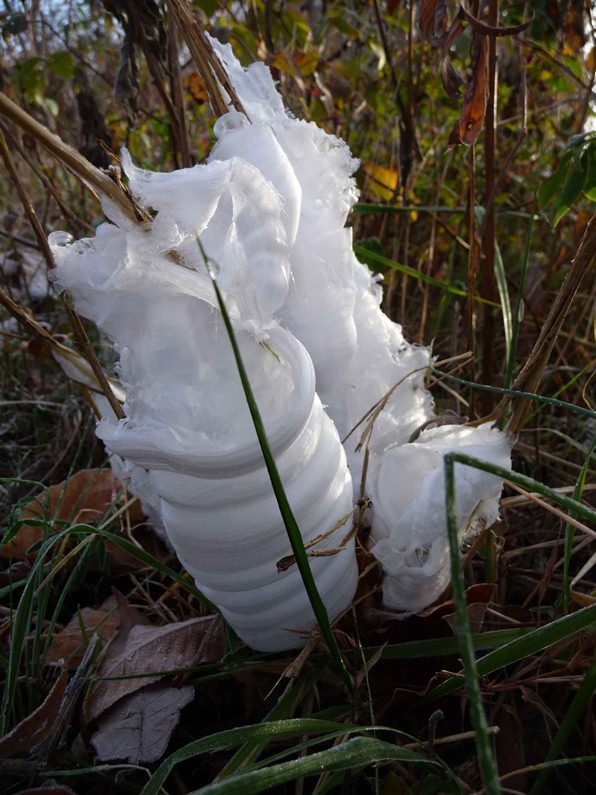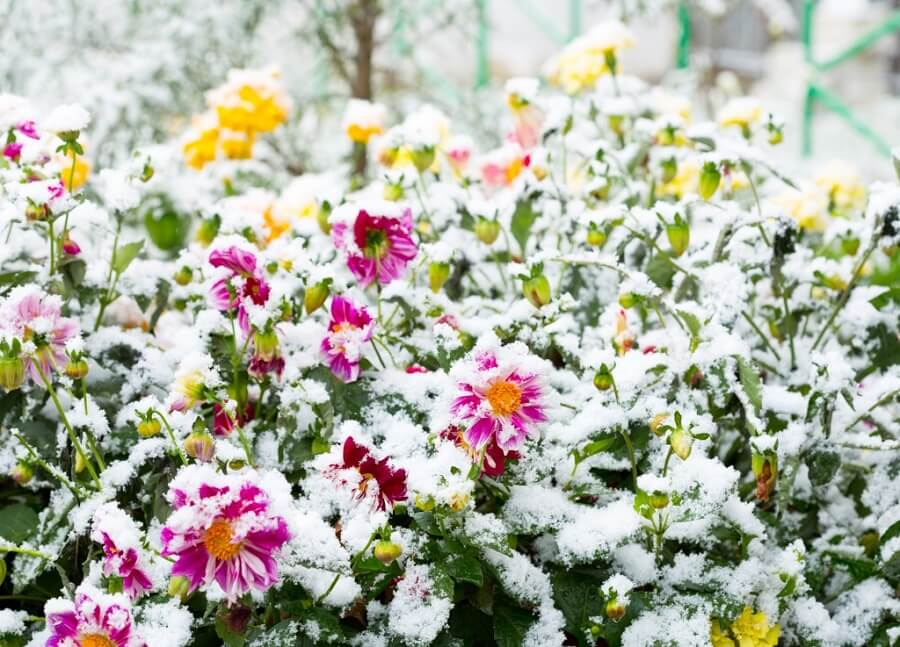Identifying Flowers That Need Protection from Frost
When it comes to protecting flowers from frost, it’s essential to know which ones are most susceptible to damage. Some flowers are more sensitive to frost than others, and if not covered, can suffer significant damage or even death. Azaleas, rhododendrons, and hydrangeas are examples of flowers that need protection from frost. These flowers have delicate petals and structures that can be easily damaged by frost, making them more vulnerable to cold temperatures.
Azaleas, for instance, have thin petals that can be damaged by even light frost. If not covered, azaleas can suffer significant damage, including discoloration and wilting. Rhododendrons, on the other hand, have thick, waxy leaves that can provide some protection from frost, but their delicate flowers can still be damaged. Hydrangeas, with their large, showy flowers, are also sensitive to frost and can suffer damage if not covered.
Other flowers that need protection from frost include gardenias, camellias, and citrus trees. These flowers have delicate petals and structures that can be easily damaged by frost, making them more vulnerable to cold temperatures. If you’re wondering what flowers need to be covered for frost, these are some examples of plants that require protection.
It’s crucial to identify which flowers in your garden need protection from frost to take the necessary steps to safeguard them. By knowing which flowers are most susceptible to frost damage, you can take proactive measures to protect them and prevent damage. In the next section, we’ll discuss how to choose the right frost cover for your flowers.
How to Choose the Right Frost Cover for Your Flowers
When it comes to protecting your flowers from frost, choosing the right frost cover is crucial. With so many options available, it can be overwhelming to decide which one is best for your flowers. In this section, we’ll discuss the different types of frost covers available, their pros and cons, and provide tips on how to choose the best one for your flowers.
Burlap is a popular choice for frost covers, as it is breathable, durable, and can be easily draped over plants. However, it can be heavy and may not provide adequate protection for delicate flowers. Sheeting, on the other hand, is a lightweight and easy-to-use option that can provide good protection for flowers. However, it may not be as durable as burlap and can tear easily.
Frost cloth is another popular option for frost covers, as it is lightweight, breathable, and can be easily cut to size. It is also a good choice for delicate flowers, as it provides gentle protection without weighing them down. However, it may not provide adequate protection for larger plants or for prolonged periods of frost.
When choosing a frost cover, consider the type of flowers you are protecting, the size of the plants, and the duration of the frost. It’s also essential to consider the material, weight, and breathability of the cover. By choosing the right frost cover, you can provide your flowers with the protection they need to survive the frost.
Some other factors to consider when choosing a frost cover include the ease of use, the cost, and the durability. Look for a cover that is easy to put on and take off, is affordable, and can withstand repeated use. By considering these factors, you can choose a frost cover that meets your needs and provides your flowers with the protection they need.
Preparing Your Flowers for Frost Covering
Before covering your flowers for frost, it’s essential to prepare them properly to ensure the best protection. This includes watering them well before covering, removing any dead or damaged leaves, and pruning back any weak or damaged stems. By preparing your flowers in this way, you can help prevent damage from frost and ensure they remain healthy and thriving.
Watering your flowers before covering them is crucial, as it helps to prevent moisture from accumulating on the leaves and stems, which can exacerbate frost damage. Make sure to water your flowers thoroughly, but avoid overwatering, which can lead to root rot and other problems.
Removing dead or damaged leaves and pruning back weak or damaged stems can also help to prevent frost damage. Dead or damaged leaves can provide a pathway for frost to enter the plant, while weak or damaged stems can be more susceptible to breakage. By removing these leaves and stems, you can help to prevent damage and promote healthy growth.
Additionally, consider applying a layer of mulch around the base of your flowers to help retain moisture and regulate soil temperature. This can help to protect the roots of your flowers from frost damage and promote healthy growth.
By preparing your flowers in this way, you can help to ensure they remain healthy and thriving, even in the face of frost. In the next section, we’ll discuss how to cover your flowers for frost, including how to drape the cover, secure it, and ensure good air circulation.
Covering Your Flowers for Frost: A Step-by-Step Guide
Covering your flowers for frost is a crucial step in protecting them from damage. Here’s a step-by-step guide on how to cover your flowers for frost:
Step 1: Choose the right frost cover for your flowers. Consider the type of flowers you are covering, the size of the plants, and the duration of the frost. Burlap, sheeting, and frost cloth are popular options for frost covers.
Step 2: Drape the frost cover over the flowers, making sure to cover all parts of the plant. Use stakes or weights to secure the cover in place, if necessary.
Step 3: Ensure good air circulation around the flowers. This can be achieved by leaving a small gap between the cover and the ground, or by using a breathable frost cover.
Step 4: Check the frost cover regularly to ensure it is still in place and providing adequate protection. Make any necessary adjustments to the cover to ensure the flowers remain protected.
Step 5: Remove the frost cover when the frost has passed. Inspect the flowers for any damage and provide any necessary care.
By following these steps, you can help protect your flowers from frost damage and ensure they remain healthy and thriving. Remember to choose the right frost cover for your flowers, drape it correctly, and ensure good air circulation to prevent damage.
It’s also important to note that different types of flowers may require different types of frost covers. For example, delicate flowers such as azaleas and rhododendrons may require a more gentle frost cover, while heartier flowers such as roses and carnations may require a more durable cover.
Additional Tips for Protecting Your Flowers from Frost
In addition to covering your flowers with a frost cover, there are several other tips you can follow to protect them from frost damage. One of the most effective ways to protect your flowers from frost is to use anti-desiccant sprays. These sprays can help to prevent moisture from accumulating on the leaves and stems of your flowers, which can exacerbate frost damage.
Another way to protect your flowers from frost is to bring potted plants indoors. If you have potted plants that are sensitive to frost, bringing them indoors can provide them with a safe and warm environment until the frost has passed. Just be sure to acclimate your plants to indoor conditions gradually to prevent shock.
Cold frames are another option for protecting your flowers from frost. Cold frames are essentially boxes with transparent lids that allow sunlight to enter and warm the interior. They can be used to protect plants from frost and can be especially useful for plants that are sensitive to frost but still need to be exposed to sunlight.
Other tips for protecting your flowers from frost include using mulch to insulate the soil, avoiding fertilization during the winter months, and pruning your plants to reduce their size and make them less susceptible to frost damage.
By following these tips, you can help to protect your flowers from frost damage and ensure they remain healthy and thriving. Remember to always monitor the weather forecast and take action to protect your flowers before the frost sets in.
Common Mistakes to Avoid When Covering Flowers for Frost
When covering flowers for frost, it’s essential to avoid common mistakes that can reduce the effectiveness of the cover or even cause more harm to the plants. Here are some common mistakes to avoid:
Covering flowers too tightly is a common mistake that can lead to moisture accumulation and promote the growth of diseases. Make sure to leave enough space between the cover and the flowers to allow for good air circulation.
Not providing enough ventilation is another mistake that can lead to moisture accumulation and promote disease growth. Make sure to provide enough ventilation to allow for air to circulate under the cover.
Leaving the cover on for too long is also a mistake that can cause more harm to the plants. Remove the cover as soon as the frost has passed to allow the plants to receive sunlight and air.
Using the wrong type of cover is another mistake that can reduce the effectiveness of the cover. Choose a cover that is breathable, waterproof, and suitable for the type of flowers you are covering.
Not securing the cover properly is also a mistake that can lead to the cover being blown away by wind or damaged by animals. Make sure to secure the cover with stakes, weights, or other means to prevent it from being displaced.
By avoiding these common mistakes, you can ensure that your flowers receive the best protection from frost and remain healthy and thriving.
Post-Frost Care for Your Flowers
After the frost has passed, it’s essential to provide your flowers with the necessary care to help them recover from any damage. Here are some tips on how to care for your flowers after the frost:
Remove the cover: Once the frost has passed, remove the cover from your flowers to allow them to receive sunlight and air. This will help to promote healthy growth and prevent the buildup of moisture.
Inspect for damage: Inspect your flowers for any damage caused by the frost. Check for signs of damage such as wilted or discolored leaves, and remove any damaged or dead flowers.
Provide necessary care: Provide your flowers with the necessary care to help them recover from any damage. This may include watering, fertilizing, and pruning.
Monitor for disease: Monitor your flowers for any signs of disease or pests, and take action to prevent the spread of disease.
Consider pruning: Consider pruning your flowers to help them recover from any damage. Pruning can help to promote healthy growth and prevent the buildup of dead or damaged flowers.
By following these tips, you can help your flowers to recover from any damage caused by the frost and promote healthy growth.
Post-Frost Care for Your Flowers
After the frost has passed, it’s essential to provide your flowers with the necessary care to help them recover from any damage. Here are some tips on how to care for your flowers after the frost:
Remove the cover: Once the frost has passed, remove the cover from your flowers to allow them to receive sunlight and air. This will help to promote healthy growth and prevent the buildup of moisture.
Inspect for damage: Inspect your flowers for any damage caused by the frost. Check for signs of damage such as wilted or discolored leaves, and remove any damaged or dead flowers.
Provide necessary care: Provide your flowers with the necessary care to help them recover from any damage. This may include watering, fertilizing, and pruning.
Monitor for disease: Monitor your flowers for any signs of disease or pests, and take action to prevent the spread of disease.
Consider pruning: Consider pruning your flowers to help them recover from any damage. Pruning can help to promote healthy growth and prevent the buildup of dead or damaged flowers.
By following these tips, you can help your flowers to recover from any damage caused by the frost and promote healthy growth.
It’s also important to note that some flowers may require special care after a frost. For example, azaleas and rhododendrons may require additional watering and fertilization to help them recover from any damage.
By providing your flowers with the necessary care after a frost, you can help to ensure they remain healthy and thrive throughout the growing season.









